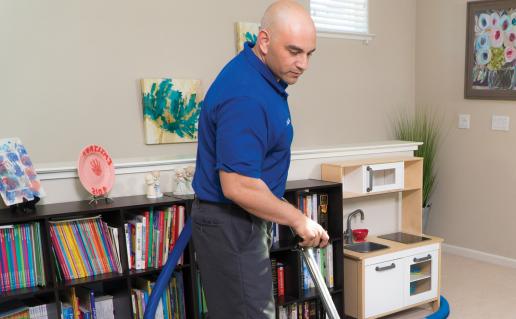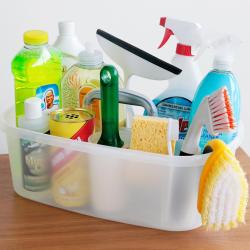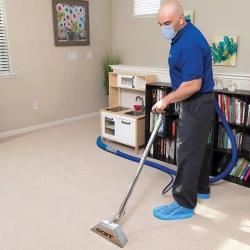Mold Stain Removal
When we hear the word “mold” or “fungus”, we don’t exactly get excited. When mold makes its way into your home, particularly onto your carpet, it’s definitely time to take action and get rid of it as soon as possible before it spreads.
If you need a few ideas to get going, COIT offers a step-by-step guide to mold stain removal to keep your carpets healthy and looking its best.
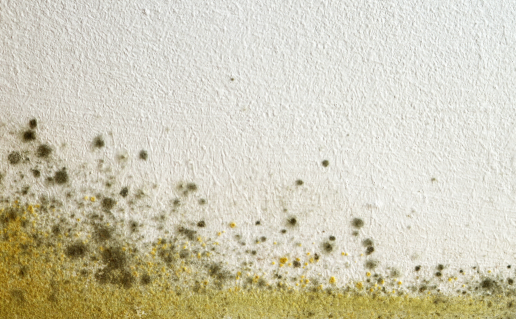
What is Mold?
By definition, mold is a type of fungus that finds its food, and ability to grow, directly from its surroundings. It can come in a variety of colors, ranging from black to white to orange and green.
Before we dive deeper into the steps required for proper mold removal, let’s take a deeper look to learn a bit more about the types of mold you may encounter.
Three Most Common Types of Household Mold
1. Stachybotrys atra - black mold
2. Cladosporium – black or green mold
3. Aspergillius – yellow-green on surface; gold or reddish-brown underneath
Believe it or not, there are actually thousands of species of mold found all over the world. The one thing all of these mold types have in common: they all require moisture in order to grow and thrive. It’s important to keep the areas of your home as dry as possible to prevent mold growth. So what are the effects of mold on its surroundings when it spreads?
Health Hazards of Mold
Mold exists in nature and is commonly found in dust around your home and your workplace. There are, however, some key facts about mold that everyone should be aware of from a health and safety perspective.
When mold is present in large quantities, this can be harmful to humans, causing respiratory issues and potential allergic reactions.
Some mold contains mycotoxins, which are harmful to both humans and animals, according to research. This type of mold is considered toxic, though not all types of mold contain these harmful mycotoxins.
How Does Mold Reproduce?
Mold reproduces and spreads through its production of spores. These spores can quickly form large colonies through mitosis and meiosis. Some mold spores can be passed through the air as well, which is why it’s important to tackle mold stain removal sooner rather than later if you discover it in your home.
Very few molds are able to reproduce at temperatures of 39 degrees or lower, which is why we refrigerate our food at this temperature. Some species of mold will remain alive, but in a dormant state, even when it’s not able to grow. Mold’s ability to withstand certain conditions is one strong reason to consider investing in professional mold removal.
Professional Mold Removal
Some mold stains are best handled by professionals in order to fully remove them. If you’re looking for a 100% satisfaction guarantee, call COIT and speak to a representative today to learn more about our cleaning services. You’ll get the best mold removal treatment to keep your carpet feeling fresh and looking clean.
How to Remove Mold from Wood
COIT's Step by Step Guide on how to remove mold from wood
The majority of time we come across unexpected mold is on old food, right? It’s never fun to discover that a bit of mold has snuck into our fridge or cabinets.
Mold is never fun to deal with anywhere in your home. It’s especially unpleasant when you find mold on the wood floors you walk on every day. It’s definitely tough to relax and go barefoot when you’re wondering how to remove mold from wood.
Before you pull up the wood floorboards, take a few minutes to look over COIT’s guide to removing mold from wood. Step-by-step, we’ll guide you through the mold removal process so you can get back to being barefoot!
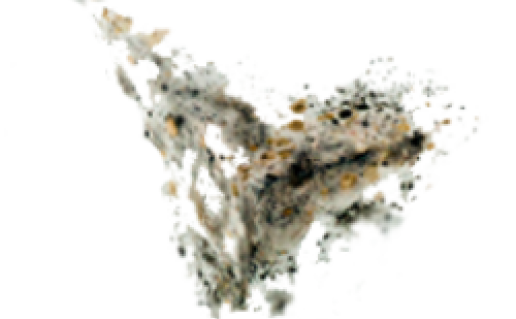
How to Remove Mold from Wood – Method # 1
When you’re cleaning mold from wood, if the mold is just on the surface, follow these steps.
- Dip a clean soft rag in a mixture of vinegar, soap and water.
- Wipe away the mold on the surface using this rag.
- Rinse the affected area of the wood with water and dry.
Trouble removing your stain? Find discounts in your area - Limited time only!
How to Get Rid of Mold on Wood – Method # 2
Using a cloth and chemical solution is effective at removing mold from wood when the mold is simply sitting on the surface; however, method number one is not effective when the mold appears to have penetrated deep within the floor boards.
Follow the steps below when the mold has grown deeper into the surface of your floors.
- Using #100-grit sandpaper, begin to sand the affected area of the wood floor wherever you see any mold.
- Next, using #220-grit sandpaper, continue sanding the wood floor. Be sure to only sand the area of the wood floors that shows mold, as you don’t want to wear down the clean, surrounding areas.
- As you’re sanding the wood floor in a circular motion, spray a diluted solution of bleach onto the affected area. This will attack any live mold spores before they spread.
- Using a dry microfiber cloth, wipe away any residue that remains from the sanding. You can also finish by vacuuming the surface of the wood floor.If you choose to tackle the problem of how to get rid of mold on wood floors yourself, it’s important that you do so very carefully, as you don’t want to spread the mold to other parts of your floors or damage surrounding areas.
Should you suspect that you have a mold problem in your home beyond just a small amount, it’s crucial to take this very seriously. Mold spores can be very hazardous to your health when left untreated.
If you need professional assistance, COIT offers professional mold remediation services that are the best in the industry. Our expertly-trained team of technicians takes the presence of mold very seriously, and so should you! Call COIT today to learn more about how we can help and don't forget to checkout our coupons!
Remember to always do a spot removal test on a portion of carpet or upholstery that is normally not visible. These are suggested treatments only and COIT can't be held accountable for any damage sustained by use of the treatments in this spot removal guide.
How to Remove Mold from Carpet
COIT’s Step by Step Guide to Getting Mold Out of Carpet
Keeping your carpet clean can be a challenge. With the daily coming and going in and out of your home, we often unknowingly track dirt, dust and other contaminants onto our carpets, despite our best efforts to keep our carpets spotless.
So what do you do if you happen to find some mold spots?
Don’t let a few mold spores put a damper on your carpet – or your day. With COIT’s step-by-step guide, you’ll know how to remove mold from carpet without too much hassle.

How to Get Mold Out of Carpet – Method # 1
- Upon discovering the mold, it’s important to start the process and remove mold from carpet as quickly as possible. If you can move the piece of carpeting or rug outside the house, do so.
- Take a broom and sweep the affected area of the carpet. This will help loosen up the mold.
- Next, vacuum the affected area of the carpet. After vacuuming, empty the contents of the vacuum bag directly into the garbage.
- Create a mixture of dishwashing liquid and water in a bucket.
- Using a sponge, scrub the affected area of the carpet with the soapy solution you just mixed.
- If you’re able to take the carpet outside, let it dry naturally in the sun. If the carpet is not moveable, pat dry the surface using a dry towel or rag.
Please note that you’ll want to avoid drying the carpet or rug using a fan. Doing so can actually cause the mold spores that may still be present to scatter and re-grow in other areas.
Up to 50% off Residential cleaning services - Find discounts in your area!
Remove Mold from Carpet – Method # 2
Here’s another do-it-yourself way to approach getting mold out of your carpet.
- First, perform a base cleaning of the carpet using a steam cleaner, if possible. If you don’t have access to a steam cleaner, you can scrub the carpet with a rag, using a mixture of dishwashing liquid and water.
- After the initial surface clean is done, mix 1 cup of household bleach (hypochlorite solution) with 1 gallon of water and apply directly to the affected area. Let the solution sit and soak into the carpet for 10 to 15 minutes.
- Using a steam cleaner again, suck up any remaining moisture on the carpet.
- It’s important to dry the carpet as much as possible to prevent mold growth. Use a dry towel and pat the area dry. Be sure to thoroughly wash the towel you use.
So the next time you encounter a mold spot, you’ll have two few do-it-yourself answers to the question of how to get mold out of carpet.
For more advanced carpet cleaning that utilizes professional-grade technology, consider calling COIT Carpet Cleaning to learn more about our 100% satisfaction guarantee and don't forget to checkout our coupons!
Remember to always do a spot removal test on a portion of carpet or upholstery that is normally not visible. These are suggested treatments only. COIT can't be held accountable for any damage sustained by use of the treatments in this spot removal guide.





